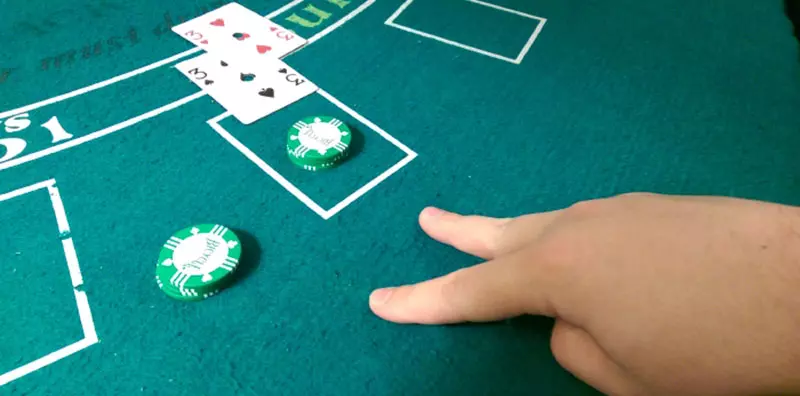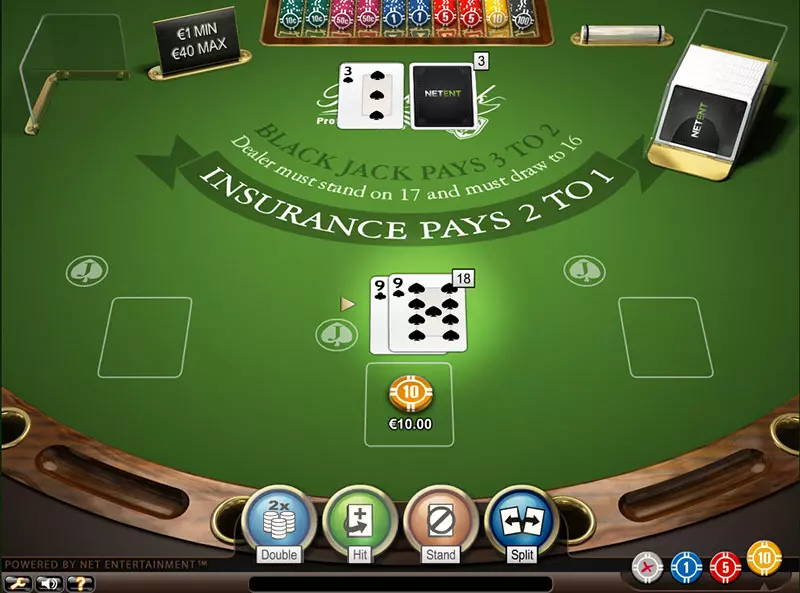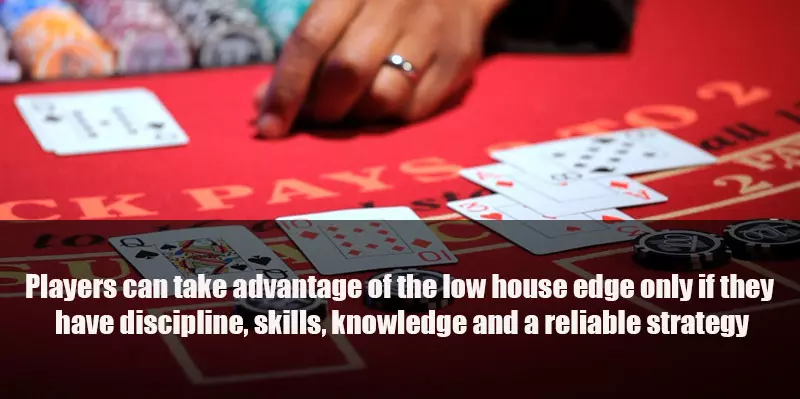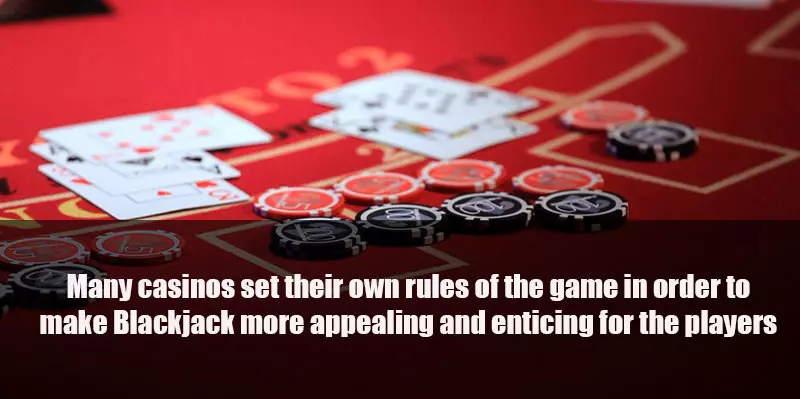Knowing the basic terms and rules is crucial when it comes to playing blackjack as this is a game that requires skills and knowledge more than luck. If players’ first priority is to win then they should get familiar with all of them in order to understand how the game works and gain advantage over the casino.
This way players will truly increase their chances of winning as they will be able to grasp the true meaning of the game. This is the reason why every term should be understood and comprehended very well because during the course of the game, gamblers need to make their decisions in the blink of an eye.
Definition of Splitting Pairs
One of the moves players have the opportunity to perform while playing is called splitting. It can be applied when players are dealt two cards that have the same value. In this case, gamblers have the chance to split them and form two separate hands as well as get a new card dealt by the dealer for each hand.
To split a pair, players must make a second bet equal to the wager they have initially placed. Unlike doubling down, you cannot split for less than your original bet. The dealer would automatically draw one more card on each split.
The two hands are treated independently which means that players can lose the first hand and win the second one. Splitting allows gamblers the opportunity to create two potentially winning hands out of a losing one and also in cases where the dealer busts, they can double their profits.
Splitting Pairs Signal
Even though many gamblers are familiar with most of the basic rules and terms, they do not know what the correct way to indicate them is. The importance of the appropriate gesture should not be underestimated in any case as it can cause lots of misunderstandings and future losses for the players who misled the dealer, even unintentionally.
Not to mention that not only it looks bad but also it shows the attitude of the players towards the game and their own money. These players do not go to the casino to play but to give away their money.
The correct gesture and action players should perform if they would like to make such a move, is to simply place a bet at the same amount of the initial wager next to it. Also, casino fans should form their fingers in the letter V and point out the chips with them.
Some experts recommend accompanying the hand signal with a verbal declaration to prevent the dealer from misunderstanding your intentions. Just make sure to say it loud and clear enough in order to avoid any confusion. Something that is forbidden for players is to touch the initial bet or the cards on the table in games that play with four to eight full decks. When splitting, you must make a matching wager and post it next to your initial bet. Do not stack it on top of the chips you have already posted.

The reason behind this is that the casino might perceive it as an intention to cheat by changing the initial amount of the bet or mixing up the cards. Different casinos accept and prefer different gestures, however, some would allow only particular ones. Thus, players should get familiar with the casino’s rules beforehand to make sure they are using the right ones.
The casino protocol for splitting is different in single-deck and double-deck blackjack variations where the dealer holds the pack(s) in their hand and pitches them toward players during the initial deal. One crucial difference that can be observed here is that the players’ cards are dealt with their faces down. You can touch them to see your total but with one hand only and without removing them from the table.
The signal for splitting in hand-held games coincides with that for doubling down. In other words, you must lightly throw your cards on the felt with their faces up and then post the additional wager, required for the split.
Reasons to Split
The time when players should split is the same as when they should double down – whenever the dealer is in a disadvantageous position. You should play more aggressively when the dealer is in a bad spot since this enables you to potentially capitalise on their weakness, winning two or sometimes more bets within a single round.
As the same rule applies for both moves, they are often confused and many gamblers struggle to make up their minds. Just like any other move, splitting doesn’t guarantee players that the dealer will inevitably deal them with a good card but that they have the chance to make a better profit and use the situation.
However, splitting is not always recommended as an offensive move made for the purposes of profit maximisation. The basic strategy recommends some pair splits as a defensive play. It can help players reduce their losses when they are at a disadvantage against dealers with strong upcards. Another reason to split a pair is to turn a losing hand total into a potentially winning one.
Nowadays, most casinos allow a lot of splitting moves and it is really important for players to know exactly when to take action as it can place them in a disadvantageous position if they don’t use the right strategy. Gamblers should only split when the split hand has a higher chance to end up with a better total than the two cards the players initially got.
Doubling Down
Splitting Pairs
Blackjack Basic Strategy
Blackjack Hand 8 or 9
Blackjack Hand 10 or 11
The Right Strategy For Splitting
It is essential for players to know when to take advantage of this move and when to avoid it. In order to provide a better understanding of it and to show how it can be applied, we will have a look at different situations where it is recommended for players to take the chance to split.
For instance, splitting is an option when players have a pair of 2s and 3s in their hand and the dealer has a two through seven. Another case is when players have a pair of 6s and the dealer has a three through six and when their hand is a pair of 7s and the dealer shows a two through seven.
The same goes for players who have a pair of 9s in their hand and the dealer has a three through nine. Blackjack devotees need to pay special attention when they have a pair of 5s or 10s in their hand as they need to avoid splitting in such cases.
Similarly to the correct plays for standing, doubling, and hitting, pair splitting is also influenced by the set of playing conditions a given blackjack variation offers. The optimal moves for pairs are impacted by factors such as deck number, the dealer rules, and perhaps more importantly, by the availability or absence of doubling after a split (DAS).
This is due to the fact that players face more mathematically optimal splits in the presence of DAS. By contrast, they are presented with fewer such instances in games whose ruleset prohibits doubling after a split (NDAS).
For example, splitting 2s and 3s is recommended in DAS games against the dealer’s 2 or 3. The same goes for a pair of 4s when the dealer shows a 5 or a 6. Paired 6s should also be split against a deuce when DAS is possible. Under the NDAS set of rules, all these pairs should be hit rather than split.

Pairs of 5s and 10s
Basic strategy is unequivocal when it comes to how one should handle paired 5s. This pair should never be split regardless of deck number, dealer rules, and DAS availability. Yet, many misguided players choose to split this pair, particularly when the dealer starts with a weak face-up card like 5 or 6. In reality, breaking up a starting total of 10 is a terrible play you should never make no matter what upcard the dealer starts with.
There are several reasons for this, starting with the fact that 10 is a very strong total to start with. Players actually have an edge with 5s against the dealer’s 6. The basic strategy recommends a more aggressive approach under these circumstances.
The correct play for this pair is to double down when the dealer shows upcards 2 through 9. You hit against strong upcards 10 and an ace. Splitting, followed by standing (which is another nonsensical play), yields the lowest expectation for basic strategy players. The figures that follow correspond to variations with a dealer who stands on all 17s, DAS, splitting to a maximum of four hands, and no resplitting or hitting split aces.
Hitting 5s against a 6 yields an expected return of 0.2877, or nearly £0.29 per every pound you wager in this situation. By contrast, the expectation of doubling on this pair against the same dealer upcard jumps to 0.5755, or roughly £0.58 per wagered unit. Splitting the pair of 5s lags behind with a significantly lower expectation of 0.0454, or around £0.10 for the two hands combined.

The EV is positive due to the fact the player is still at an advantage with 5s against the dealer’s 6. Unlike the dealer who must draw to at least 17 by default with the risk of busting, a player starting two new hands with 5 can stop drawing cards if the next hits result in a bad total.
The bottom line is you should never split 5s because it significantly reduces your expectation, i.e. this poor play ends up costing you money in the long run. Stick to what basic strategy tells you and you will maintain a healthy bankroll.
Another pair you should never touch consists of two ten-value cards, like 10-10, K-Q, J-J, Q-J, and 10-K, for a solid total of 20. Rookie players commit the same mistake as that when holding a pair of 5s.
They split the 10s when the dealer is in a tough spot with a 5 or a 6. Similarly to splitting 5s, this play still yields a positive expectation but will ultimately cost you over the long haul. Basic strategists should always stand on paired 10 no matter how weak the dealer is.
The saying “Only idiots and card counters split tens” could not be truer. Card counters indeed do this stunt but this is because they can identify the spots in which splitting this hand brings them at an advantage. So unless you count cards, you should never do it.
Pairs of Aces and 8s
A hard total of 16 is the worst possible scenario a blackjack player can find themselves in. This is a terrible hand that is bound to lose more often than it wins. It yields a negative expectation no matter how one plays it. Many players are aware of this fact, which is why they choose not to split pairs of 8s against strong upcards 9 through ace. The reasoning behind this is splitting 8s might give you two lousy hands instead of one. And surely enough, sometimes you will get stuck with bad totals and will end up losing both splits.
Nevertheless, the basic strategy recommends you to split 8s against all upcards. This is a defensive play. You will still incur losses with this pair in the long term but will lose less money by splitting compared to the other possible plays. A hard 16 is a terrible hand to hit because you stand a very decent chance of going over 21 and losing with the next card.
Standing on 16 against strong upcards is also a poor idea because the dealer’s probability of outdrawing you is higher. Meanwhile, splitting slightly improves your chances since you get to start two new hands with an 8 each. Drawing to a hard 8 is more tolerable. If you lose one split and win the other, you essentially break even during the respective round.

Occasionally, you will receive aces, deuces, or 3s next to your 8s, transforming a terrible total of 16 into two very strong two-card hands. The expected return for standing with 8s against the dealer’s ten is -0.540430 whereas that of hitting is slightly better at -0.539826.
However, splitting the 8s cuts your losses to -0.480686 per unit wagered, which makes it the optimal play against a dealer starting with a ten-value card. This tendency is also to be observed against all other dealer upcards regardless of their pip value.
Splitting serves a two-fold purpose from a basic strategy perspective – it reduces your losses when holding 16 and allows you to potentially improve your situation by starting two hands with a better total of 8.
With this in mind, there is only one exception when splitting is no longer the optimal play. In multiple-deck and double-deck blackjack where the dealer must hit soft 17, you will save more money by surrendering rather than splitting. Of course, if surrender is not allowed under the house rules, you should still split.
Aces are another pair basic strategists must always split, with no exceptions regardless of deck number and the dealer’s standing rules. The difference here is splitting aces is an offensive rather than a defensive move. A pair of aces is a soft hand, valued either as 12 or as 2. Either total is bad to start a hand with.
Meanwhile, splitting gives you the opportunity to start two powerful hands with a total of 11 each. It yields the highest expectation for the player compared to the rest of the possible moves. You can increase your gains by never deviating from this rule. Split aces are so good for players that most casinos impose restrictions on this pair as you shall see later.
Re-Splitting and Other Common Variations in Splitting Rules
Each variation of 21 has its distinct rules in regard to splitting pairs. What is allowed at one table may be prohibited at another. Regardless of the exact rules, players can only make this play on their starting two-card total, i.e. they cannot split after they have chosen to hit, for example. Splitting is a powerful playing decision, so much so that its availability causes a 0.57% dent in the house edge.
We advise you to always inform yourself about the exact rules for pair splitting before you select a new blackjack variation. Online players can check the Help section of their chosen blackjack variant where they will find detailed information about the rules, including those for splitting.
Resplitting
Most blackjack variants allow players to split up to three times to a maximum of four hands during a single round of play. If players are deprived of the option to resplit, this puts them in a disadvantageous position, increasing the casino’s advantage by 0.10%. It is also estimated that the restriction on resplits costs players about a dollar for every 100 hands. In this sense, it is advisable to find a casino that allows resplits.
When players would like to resplit, they should apply the same strategy and rules. Whenever it is correct to split in the first place, it will be also advisable for players to resplit. They just need to make sure that they follow their strategy precisely and understand the reason why splitting should be done.

Restrictions on Pairs of Aces
We previously touched upon this rule but let us expand further on the subject. Splitting aces is highly advantageous for players so naturally, casinos impose restrictions on this pair in an attempt to offset the edge this pair gives to patrons. Players are commonly prohibited from resplitting aces, which leads to a house edge increase of 0.08%.
Some establishments take this even further and altogether disallow the splitting of aces, boosting their advantage over players by 0.18%. If the move is allowed, however, each split ace receives no more than one card. The hand automatically stands afterwards regardless of its total. This makes sense considering players who can draw to split aces get to enjoy a house edge reduction of 0.19%.
If a split ace catches a ten-value card, this counts as a regular total of 21, not as a blackjack. The same goes if an ace lands next to a split ten, but this is nothing to cry about considering basic strategists should never split tens, to begin with.
Therefore, two-card hands that add up to 21 following a split pay even money instead of yielding the bonus payout for blackjacks. Had this been the case, players would have enjoyed a house edge reduction of 0.21% at 3 to 2 tables and 0.11% in games that use the lower blackjack odds of 6 to 5.
No Splitting of Unlike Tens
Some blackjack variations also prohibit players from splitting unlike ten-value cards. Tens can be split only on condition they have the same denomination like J-J, K-K, Q-Q, and 10-10. Such restrictions are of no concern for basic strategy players.
If anything, they would partially minimise the damage for those who occasionally violate the “never split tens” rule. The main purpose of this limitation is to deter card counters who can split tens at an advantage by identifying the situations when this becomes a favourable play.
Rare Splitting Rule Variations
Next to all rule variations we explained above, we came across some other interesting splitting variations. Even though these are not particularly common, you might find a blackjack table that features them and be tempted to give it a try. So, in the lines below we will briefly explain each of them.
- No Ace Splits – some casinos do not allow blackjack players to split aces. This is not a favourable condition from the players’ perspective.
- Multiple draw after split Aces – usually, one card is dealt to each split hand after splitting aces. However, this rule allows players to benefit from more draws.
- Split any time – under this rule, blackjack devotees can split a hand even after drawing additional cards. The only condition is that the hand should consist of at least two cards of the same value.
- Split any 16 – this option is quite beneficial to players as it allows them to split any 16.
- Discard Split – as the name suggests, discard split provides players with the opportunity to give up their hand after splitting.
- No 4, 5, or 10 splits – it is a UK rule that does not allow blackjack players to split a pair of 4, 5, or 10.
Conclusion
Splitting is one of the most common moves that players perform every time they play. This is the reason why they should know when to split and when to avoid it. Due to the overextended options of this move, many gamblers get confused and struggle to make up their mind. Splitting is a great chance for them to increase their profit during the game as long as they know when to take advantage of it. Gamblers should remember to only split when the dealer is in an unfavourable position.